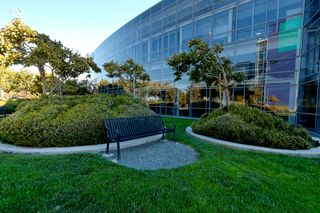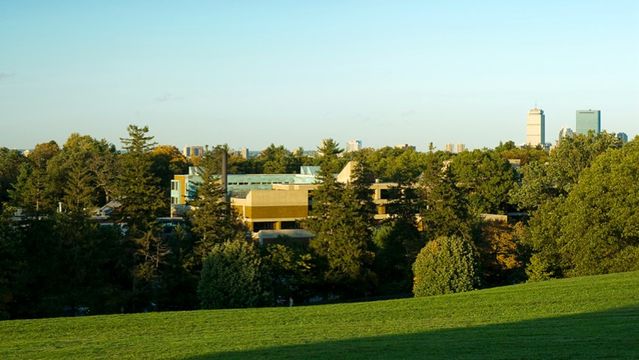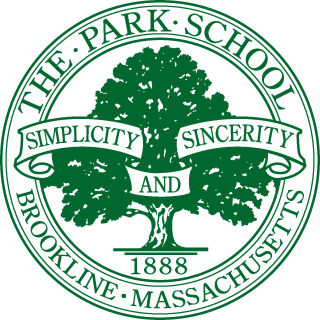Environment
Kids and Classrooms: Why Environment Matters
Rundown schools—with no windows or green views—result in lower test scores.
Posted January 26, 2016

In his seminal 1958 book, The Poetics of Space, Gaston Bachelard identifies the importance of architectural design—as well as the surrounding landscapes and infrastructure of buildings—on the human psyche. Bachelard contends that our minds thrive in spaces that allow us to daydream, and stagnate in spaces that are depressing or oppressive.
Clearly, the ‘campuses’ created by innovative companies such as Google, Microsoft, and Pixar understand the importance of the poetics of space. Like every Ivy League school, their campuses are surrounded by green landscapes and trees. The glass infrastructures of these campuses house offices that are filled with natural sunlight and provide panoramic views.
The architectural blueprints of these work environments were designed to stimulate the imagination and facilitate creative thinking. Fine tuning the poetics of these workspaces results in more ingenuity, trademarks, patents, etc. along with higher productivity and increased profit margins.
Whether it's intuitive or cerebral, the thought leaders at these billion dollar corporations know that improving the poetics of space within a work environment optimizes every employee’s potential—while lowering his or her stress and reducing mental fatigue. Improving the poetics of space creates a happier workplace that makes employees less likely to quit and improves job satisfaction.
Unfortunately, the oppressive architecture and rundown infrastructure of many of our American public schools—especially in poorer neighborhoods—represent the polar opposite end of 'the poetics of space' spectrum.
Instead of promoting daydreams, many American public schools and classrooms are a nightmare for both students and teachers. By not allocating the necessary funding to maintain our schools, we are sabotaging the odds of students and teachers succeeding. Research shows that the physical environments that we learn in have the power to optimize, or derail, someone's odds of academic achievement.
Detroit Teacher 'Sickouts' Are a Call-to-Action for Improving School Conditions
Throughout January 2016, teachers in Detroit have been organizing large scale ‘sickouts’ to protest the deplorable condition of 88 out of 100 Detroit Public Schools (DPS). In recent weeks, social media, including the DPS Facebook Page and headline news, have been filled with disturbing images of rundown and dilapidated schools in Detroit. On Jan. 25, 2016, The Detroit Free Press reported,
"City of Detroit inspections of 11 public schools—conducted as part of a district-wide review in response to mass teacher 'sickouts'—revealed widespread code violations, including multiple instances of rodents, mold, damaged roofs and broken glass. City inspectors found 152 violations, an average of nearly 14 for each school. School officials will have about a month to make repair."
The mayor of Detroit, Mike Duggan, says the teachers have legitimate concerns about maintenance and building conditions of the schools. After a recent tour of some schools in Detroit, Duggan told NPR, "I've seen some very well-maintained buildings. And I've seen some buildings that would break your heart."
A wide range of studies have confirmed the importance of spending money on school infrastructure, maintenance, and architectural design. In 2004, a nationwide study concluded that in order for American school districts to maximize attendance, and minimize drop-out rates, they need to provide students, teachers, and administrators with higher quality school stuctures, and pay to maintain these schools.
In 2008, a study from the University of Texas at Austin found that, “There are many inadequate high school facilities in Texas, and unfortunately many of these are found in areas of low socioeconomic status and high minority percentages.” The researchers also determined that inadequate high school facilities and poor classroom conditions had a negative impact on students’ academic performance.

School environments and the poetics of space have a huge impact on teachers' job satisfaction and ability to educate students. A study in Washington, DC found that the attrition of both new and experienced teachers is a huge challenge for school administrators throughout the United States. This is especially a problem in large urban districts that don't usually have the financial resources to maintain school facilities.
Teachers, like most employees, tend to quit when their working conditions are atrocious. The good news is that teachers are likely to stay when the infrastructure is repaired. Of course, fixing up schools takes money. The lack of resources and funding is the main reason for the epidemic of rundown schools across the country.
Hopefully, putting a spotlight on the importance of maintaining the infrastructure of schools, for both teachers and students, will motivate American policymakers to re-evaluate budget priorities and direct more resources to improving our nation's schools.
Other foreign countries have had greater educational success than the United States by investing a larger proportion of their budgets in the public education system and reducing the inequality gap between rich and poor. For example, a report by Scholastic recently ranked Finland #1 in the world based on educational success. The primary reason given for their educational success was that the Finns create “good learning environments.”
Windowless Classrooms Increase Mental Fatigue and Lower Test Scores

A January 2016 study by researchers at the University of Illinois at Urbana-Champaign Department of Landscape Architecture identified that windowless classrooms are linked to lower test scores for high school students. The researchers found that high school students perform better on tests if the classroom has a view of a green landscape, rather than a windowless room, or a room with a view of another building or a parking lot.
Students with a green view outside a classroom window performed better on tests requiring focused attention, had less mental fatigue, and recovered better from stress. This is the first study to establish a causal relationship between exposure to a green view and students' performance.
The researchers hope the results of their research will lead to policy changes. In a press release, William Sullivan, head of the landscape architecture department, and author of Fostering Reasonableness: Environments for Bringing Out Our Best, said, “Changes in school design and in policies regarding recess, for example, would be a much better investment than any of the things we spend money on in secondary education today."
Socioeconomic Stratification, School Buildings, and Academic Achievement
Recently, I wrote a Psychology Today blog post, "Childhood Poverty Can Damage Brain Connectivity and Function,” based on a study which found a correlation between children who grow up in low-income households and an increased risk for clinical depression.
The potential hopelessness caused by poverty appears to have neurobiological impacts on the developing brain. The new study on the impact of classroom views on mental fatigue, stress, and lower test scores dovetails with these findings because schools in poorer urban areas, such as Detroit, don’t have classrooms that optimize cognitive performance.
Yet again, science-based research confirms that the deck is stacked unfairly against anyone who didn’t win the 'birthplace sweepstakes' by being born into an affluent household or doesn't live in an upper-income neighborhood. Of course, it’s possible for someone to overcome these childhood obstacles, but these findings should serve as a powerful reminder to budget makers that we need to invest more resources in our public schools and classroom environments.
In many ways, I won the 'birthplace lottery' by being born to parents who could afford to send me to private schools. That said, I feel an equal mix of guilt and gratitude about being born privileged. More than anything, I have a strong sense of noblesse oblige, which I interpret as the obligation of someone who is privileged to be generous and proactive about improving the opportunities and circumstances of others who are less fortunate. This mission is my prime driving force and why I am writing this blog post.
The Park School Motto: "Simplicity and Sincerity"

Growing up, I was fortunate enough to attend private schools such as The Park School in Brookline, Massachusetts. In 1971, former Headmaster Robert S. Hurlbut, Jr. hired the architecture firm of Earl Flansburgh & Associates to build a new 'green' campus for The Park School. I attended Park from the late '70s through the early '80s.
In the late 1960s, Hurlbut had masterminded a “hidden curriculum” that included facilitating a “boundary-less” education by creating classrooms with moving walls to provide more open space. He also wanted to surround the school with trees so that students felt connected to nature. Even though The Park School is only a stone’s throw from downtown Boston, the campus feels like you're in a secluded forest. As a young student, going to a school that felt like it was in the wilderness allowed my imagination to run wild.

Although it’s pure conjecture on my part, I have a hunch that in the 1800s, when the founders of The Park School were creating their philosophy and curriculum, that the Transcendentalists, who resided in enclaves in and around Boston, may have influenced their pedagogy. Ralph Waldo Emerson and Henry David Thoreau were both famous Transcendalists . . . In my opinion, the name, logo, and motto of The Park School capture the essence of Transcendetalism in many ways.
Also, it wouldn’t surprise me if my former Headmaster, Bob Hurlbut, was influenced by the work of Edith Cobb who wrote the brilliant book, Ecology of the Imagination in Childhood. Cobb believed that children need to feel a connection with nature in order to tap into their creative wellspring and optimize their learning potential. On page 69 Cobb writes,
“Even in the simplest day-to-day activities, the experience of being oneself, a “circular causal system” in one´s ecology, with the capacity to add forms or to change the very shape and nature of the environment, is in itself a far more creative process, with a much more profound meaning for human beings, than is generally conceded.”
Fluorescent Lights + Windowless Cubicles = Claustrophobia
Ever since I was a kid, I've been hypersensitive to classrooms that don't have any windows. My body and mind short circuit when I'm trapped in any windowless room, especially if it's illuminated with traditional fluorescent lights. Also, being forced to sit still in a hybrid desk-chair makes me antsy and fidgety. I'm sure that I would have been diagnosed with ADHD, if such a diagnosis had existed in the 1970s.
One reason I hated Sunday School growing up was that the classroom was located in a windowless basement with cinder-block walls and illuminated by headache-inducing fluorescent lights. The inability to see outside made me feel I was a prisoner in a concrete cell. If my regular school had similar classrooms without any windows, natural light, or green views, I most likely would have flunked out, or dropped out, before graduation.
The lack of windows, natural light, and green views in most high-rise office buildings is the main reason I can't work in an office cubicle. After college, I tried a couple times to work in an office... but I usually only lasted a few days before I quit. It's no coincidence that upper level management and C-Level positions are always given the offices that utilize the poetics of space by providing windows, sunshine, and landscape views.
Conclusion: Optimizing Academic Performance Through the Poetics of Space
The classic Greeks understood the importance of feeling a connection to nature, through physical activity and being surrounded by green spaces, during the learning process. They designed schools and campuses that embraced the poetics of space. For example, Aristotle's Peripatetic School was formed around the concept of teaching and walking on pathways that weaved through groves of trees on the Lyceum campus.
There is growing science-based evidence that external environments and the poetics of space deeply impact someone’s ability to learn and to score well on standardized tests. Students and teachers feel intense pressure to get high test scores for the Common Core standards and No Child Left Behind, but are not being provided with classrooms and schools that optimize their potential.
If educators and policymakers want to increase the chances of every student succeeding in school by doing well on standardized tests, it's imperative to spend money on improving the infrastructure and design of public school buildings, classrooms, and surrounding landscapes.
The ever-widening gap between the 'haves' and 'have nots' has created an uneven playing field that makes it increasingly difficult for low-income students living in poverty to succeed in school. As a society, we need to mobilize and take action to provide equal educational opportunities for every child by improving the design, infrastructure, and maintenance of our public schools and classrooms.
To read more on this topic, check out my Psychology Today blog posts:
- “Why Do Rich Kids Have Higher Standardized Test Scores?"
- "Childhood Poverty Has Detrimental Impacts on Brain Structure"
- “Social Disadvantage Creates Genetic Wear and Tear”
- “Tackling the “Vocabulary Gap” Between Rich and Poor Children”
- “Childhood Creativity Leads to Innovation in Adulthood”
- “Too Much Crystallized Thinking Lowers Fluid Intelligence”
- "The Power of Awe: A Sense of Wonder Promotes Loving-Kindness"
- "One More Reason to Unplug Your Television"
- "Want to Improve Your Cognitive Abilities? Go Climb a Tree!"
- “Large City Parks and Green Spaces Promote Well-Being"
- "Why Is Air Pollution So Bad for Your Brain?"
- "Everyday Access to Nature Promotes Well-Being As We Age"
- "Where Do the Children Play in 2014?"
- "Exposure to Natural Light Improves Workplace Performance"
- "The Neuroscience of Imagination"
© 2016 Christopher Bergland. All rights reserved.
Follow me on Twitter @ckbergland for updates on The Athlete’s Way blog posts.
The Athlete's Way ® is a registered trademark of Christopher Bergland.




